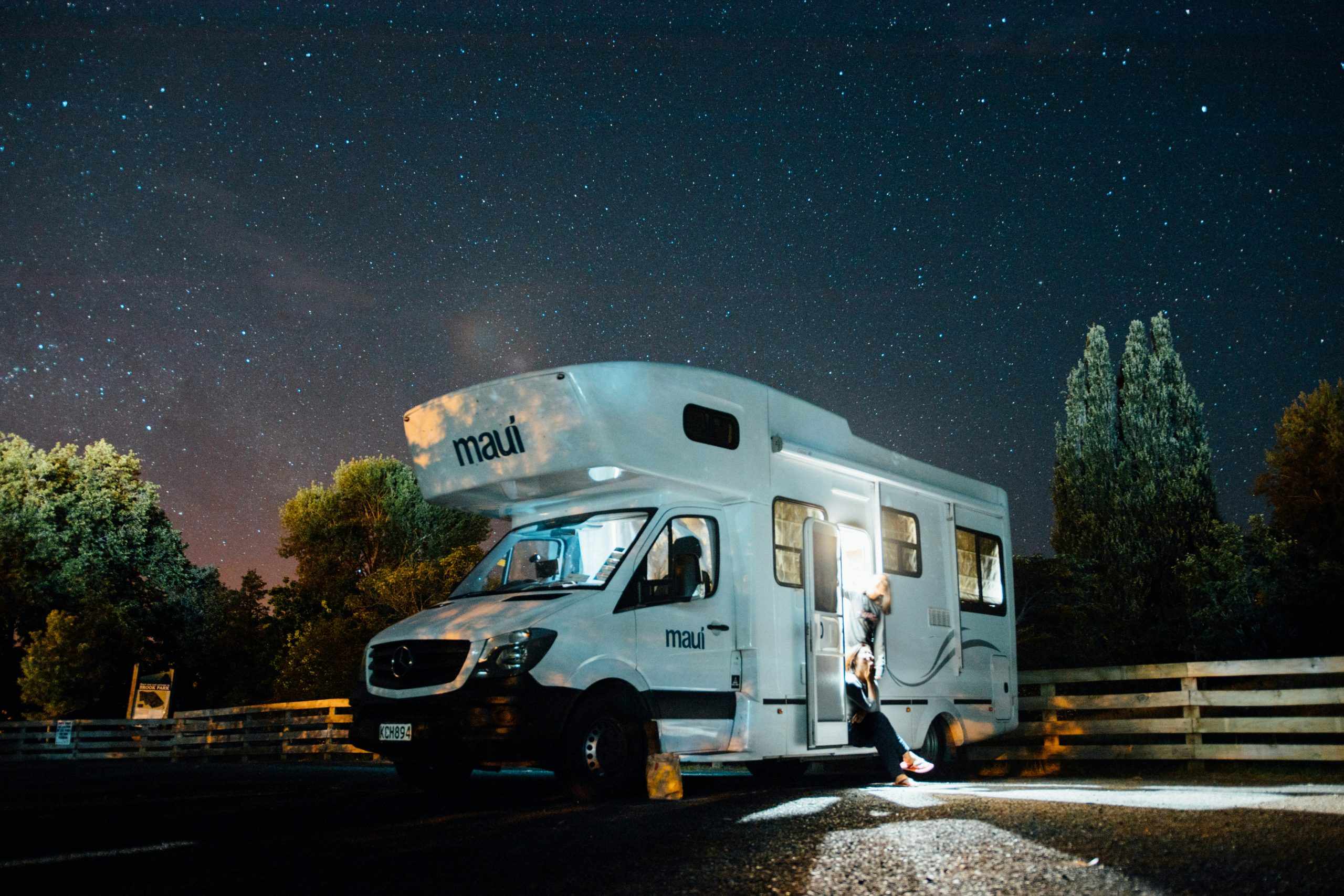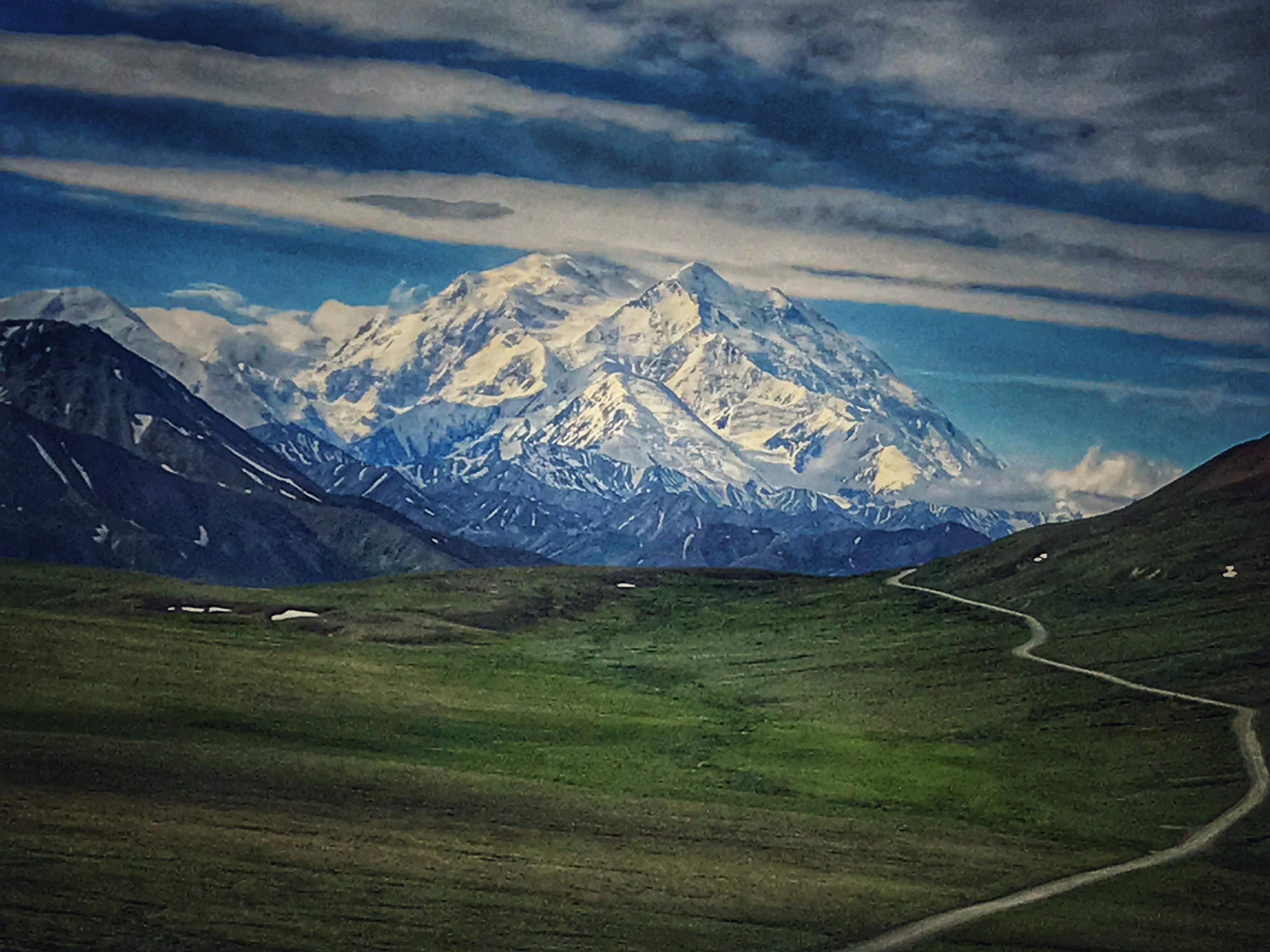At a towering 20,310 ft above sea level, the peak of Denali reigns as the highest peak in North America. Successfully reaching the summit requires a combination of physical fitness, skill, preparation, timing, and determination. You’ll also need the right equipment, a qualified group to climb with, and a little luck with the weather. Denali is not for the faint of heart.
With its glacial terrain, sub-zero temperatures, and unpredictable weather, reaching the summit of this mountain is an expedition that should only be attempted by those with the skills and experience to do so safely. Those not up for the challenge of climbing Denali itself can still find plenty of spectacular hiking opportunities in Denali National Park and experience the grandeur of this peak from a more comfortable altitude.
How does a climber prepare for Denali? What is it like to take an excursion through the region? Whether standing at the peak of North America’s tallest mountain is on your “maybe someday” list or your “never in a million years” list, an expedition of this kind is fascinating.

Denali: The Basics
Formerly known as Mount McKinley, the name of this mountain was officially changed to Denali in 2015. Located in Denali National Park in Alaska, its name means “Great One” in the language of the native people of the area. This majestic peak in the Alaska mountain range certainly deserves its name.
Denali Stats:
Location: Alaska, United States
Nearest Airport: Fairbanks International Airport (125 miles)
Nearest Cities: Fairbanks (120 miles), Talkeetna (150 miles)
When to visit: May and June, early July depending on weather
Time to Summit: Minimum 12-13 days. More commonly 17-18 days.
Summit Success Rate: 53% for individuals, 59% for guided groups

Planning the Expedition
Season and Weather
The window for climbing Denali is short. Attempting it too early means facing the dangers of strong winds and frigid temperatures. Wait too long and the snow bridges will soften and put climbers in extreme danger. The ideal season is in May and June. Expeditions can succeed in early July, but in recent years the warm season has come earlier and increased the risk of canceling a July expedition.
Even in this ideal window, climbers can expect temperatures will dip down to -35 degrees Fahrenheit at higher altitudes. Wind speeds at 14,000 feet have been known to reach 100mph. Blowing snow and white-out conditions can cause significant delays. It has also happened that teams have reached the summit wearing t-shirts. Denali climbers need to prepare for all weather conditions.
Travel
Denali expeditions begin from Talkeetna. Fly to an airport in Anchorage or Fairbanks and arrange transportation to Talkeetna, either by renting a car or taking a bus or train. Many guide companies offer airport transportation, and they will also receive packages for climbers who choose to ship their gear rather than flying with it.
To reach basecamp, most climbers choose an air taxi to skip hiking through miles of woods and over the lower glacier. The hike adds too much time to an expedition that already spans several weeks. Base camp typically has plenty of stove fuel available, as combustible fuels are typically not permitted on air taxis.
Budget
Reaching the summit of Denali is not a low-cost expedition. In addition to the cost of quality gear, and consumables like food and fuel for the journey, there are many costs involved.
- Travel to and from Anchorage or Fairbanks (approx. $600 from New York, Dallas, or Los Angeles)
- Travel from the airport to Talkeetna (price varies by the method: car, bus, train, or guide transport)
- Air taxi to basecamp (approx. $600)
- Special use mountaineering permit from Denali National Park (2019 season: $375; discounted youth permit $275 for ages 24 and under)
- Accommodations before and after the expedition itself
- Mountaineering insurance (optional – your premium varies by the altitudes you plan on climbing)
- Guide services (optional – usually quite expensive)

Professional guide or self-guided?
The national park does not require professional guides for summit expeditions. A properly trained and equipped team can organize the expedition and apply for permits on their own. Because of logistical concerns, many experienced alpine climbers still choose to hire guide services to help plan and execute the expedition.
There are only seven guide services that are approved by Denali National Park to operate on Denali. Illegal guiding is strictly prohibited and could result in a canceled climb.
Planning a route
There are three routes to the summit of Denali: the West Buttress route, the Muldrow Glacier route, and the West Rib route.
For a variety of reasons, more than 90% of climbers choose the West Buttress route. The Muldrow Glacier route is the least common, primarily because reaching the basecamp must be done by foot rather than air taxi. The route from basecamp is similar in length and difficulty to the popular West Buttress route, but few expeditions can commit the extra time to hike 19 miles into the basecamp. The West Rib route is substantially more difficult and dangerous when compared to the West Buttress, and therefore only a handful of expedition parties attempt it each year.
The West Buttress route is about 15.5 miles long with an elevation gain of 13,500 feet. Basecamp is at an elevation of 7,200 feet. Camp 2 is at 11,000 feet, and then camp 3 is at 14,200 feet. The final camp is at 17,200 feet, and the summit attempt is made from this camp to reach 20,310 feet. Do not underestimate the distance. Often a team will move half of their gear to the higher camp and then return to sleep another night at a lower altitude before moving the remaining gear.
Permits and Paperwork
Mountaineering permits are obtained through the national park ranger station in Talkeetna. Only 1500 permits are issued for climbing Denali each year, and all teams must register at least 60 days in advance of the expedition. There are no exceptions to this rule. One team leader should handle registration, and once registered the members of the team can not change. One additional team member may be added to the application so long as it is filed at least 30 days in advance.
Registration opens each year on October 1 for the coming season, and the registration process can take several weeks. Once on site in Alaska, registered teams will not receive their permits until they have completed a mandatory orientation at the ranger station.

Preparations
Physical training
Climbers on Denali must be in excellent shape physically. They should be able to carry between 40-70 lbs in a backpack while pulling a sled loaded with 60-80 lbs. Parts of the climb are done wearing either skis or snowshoes. Aerobic conditioning is critical, and climbers should also train with weights to prepare to manage heavy loads
Skills and experience
Reaching the summit of Denali is for experienced mountaineers. Climbing glaciated peaks, such as smaller mountains in Alaska, the Cascades of Washington, or the European Alps, is recommended before attempting Denali. Climbers should have sufficient glacier travel skills, including how to use an ice axe and crampons, and how to execute a crevasse rescue as an individual and as part of a team. Winter backcountry camping experience is also essential since Denali expeditions often encounter extreme winter weather conditions.
Altitude
Dealing with the physical effects of altitude is another challenge on Denali. The usual climbing route encourages climbing high and sleeping low as much as possible, as well as rest days to allow for acclimatization. An altitude over 20,000 feet is a challenge to begin with, but the altitude effects on Denali are similar to a much taller mountain. The extreme northern latitude (63 degrees north, just south of the Arctic Circle) and the generally low barometric pressure on Denali means the body experiences the altitude as being at least 2,000 feet higher than the actual measurement.
Equipment
In addition to layers of quality clothing as protection against the elements, and winter camping gear rated for sub-zero temperatures, climbers will need an ice axe, harnesses, and carabiners, and crampons. Overboots and expedition weight mittens are also required. Most equipment can be rented from outfitters in Talkeetna, but climbers should weigh the expense and hassle of transporting the needed items against the security of using gear that is familiar and tested.
Click here for a list of steps to prepare an expedition and a recommended equipment list.
Denali is a mountain among mountains, capturing the imagination of serious mountaineers and armchair dreamers alike. Over 600,000 people visit Denali National Park each year to witness this majestic view. The most adventurous among them will take on the elements to stand at the summit of The Great One.
If you are interested in planning a Denali expedition, be sure to do thorough research. A great place to begin is with Denali National Park’s frequently asked questions.
For firsthand accounts from those who have completed the expedition, you can read one man’s experience here, or watch a video journal here.
Be sure to check out Outdoorsy’s Denali State Park Guide. We’ve even got a few rides that will help you enjoy the experience.









